#xml to string php
Explore tagged Tumblr posts
Text
automatisierter UBL-XML-Generator in PHP in Kombination mit FileMaker
Während meiner Arbeit an der serverseitigen PDF-Generierung mit ZUGFeRD wurde mir schnell klar, dass viele Kunden zunehmend auf den UBL-Standard setzen – gerade im internationalen Kontext oder in Verbindung mit elektronischen Rechnungsplattformen. Also habe ich kurzerhand ein eigenes PHP-Skript geschrieben, das auf POST-Daten aus FileMaker oder anderen Quellen reagiert und daraus eine gültige UBL-Rechnung im XML-Format erstellt. Wie so oft war der Aufbau des XML-Dokuments der anspruchsvollste Teil. Viele Details wie Namespaces, Pflichtfelder und ISO-konforme Datums- und Betragsformate mussten exakt stimmen. Außerdem wollte ich vermeiden, dass mein System bei fehlenden Daten abstürzt – darum habe ich Fallbacks eingebaut und ein eigenes Logging-System integriert. Das Skript liest die Rechnungsdaten, Kunden- und Lieferantendaten sowie die Rechnungspositionen ein, berechnet die Summen und schreibt daraus ein vollständiges XML-Dokument nach dem UBL 2.1-Standard, das sich z. B. auch für die XRechnung weiterverwenden lässt. Die resultierende Datei ist kompatibel mit Plattformen wie PEPPOL, eRechnung.gv.at oder Zentralplattformen der öffentlichen Hand. Die Daten werden in FileMaker gesammelt, das ganze klassisch über schleifen. Die Daten werden über ein einfaches application/x-www-form-urlencoded-POST-Request übergeben. Alle Felder werden als Key-Value-Paare übermittelt. Die Rechnungspositionen (line items) sind dabei als kompaktes Raw-String-Feld lineItemsRaw codiert, das einzelne Positionen mit | trennt und innerhalb der Position durch ; strukturiert ist. FileMaker bietet zwar mittlerweile solide Funktionen für JSON-Manipulation – aber bei 25+ Feldern und einer schlichten Punkt-zu-Punkt-Kommunikation mit meinem PHP-Skript war mir das einfach zu umständlich. Ich wollte keine JSON-Parser-Bastelei, sondern einfach Daten senden. Daher nutze ich application/x-www-form-urlencoded, was mit curl ohnehin besser lesbar ist und mir in PHP direkt über $_POST zur Verfügung steht. "-X POST " & "--header \"Content-Type: application/x-www-form-urlencoded\" " & "--data " & Zitat ( "invoiceNumber=" & $invoiceNumber & "&invoiceDate=" & $invoiceDate & "&invoiceCurrencyCode=" & $invoiceCurrencyCode & "&invoiceTypeCode=" & $invoiceTypeCode & "&dueDate=" & $dueDate & "&paymentTerms=" & $paymentTerms & "&deliveryTerms=" & $deliveryTerms & "&sellerName=" & $sellerName & "&sellerStreet=" & $sellerStreet & "&sellerPostalCode=" & $sellerPostalCode & "&sellerCity=" & $sellerCity & "&sellerCountryCode=" & $sellerCountryCode & "&sellerTaxID=" & $sellerTaxID & "&lieferschein_nr=" & $lieferschein_nr & "&kunden_nr=" & $kunden_nr & "&buyerName=" & $buyerName & "&buyerStreet=" & $buyerStreet & "&buyerPostalCode=" & $buyerPostalCode & "&buyerCity=" & $buyerCity & "&buyerCountryCode=" & $buyerCountryCode & "&buyerTaxID=" & $buyerTaxID & "&paymentMeansCode=" & $paymentMeansCode & "&payeeFinancialInstitution=" & $payeeFinancialInstitution & "&payeeIBAN=" & $payeeIBAN & "&payeeBIC=" & $payeeBIC & "&paymentReference=" & $paymentReference & "&taxRate=" & $taxRate & "&taxAmount=" & $taxAmount & "&taxableAmount=" & $taxableAmount & "&taxCategoryCode=" & $taxCategoryCode & "&totalNetAmount=" & $totalNetAmount & "&totalTaxAmount=" & $totalTaxAmount & "&totalGrossAmount=" & $totalGrossAmount & "&lineItemsRaw=" & $lineItemsRaw )
$dom = new DOMDocument('1.0', 'UTF-8'); $dom->formatOutput = true; $invoice = $dom->createElementNS( 'urn:oasis:names:specification:ubl:schema:xsd:Invoice-2', 'Invoice' ); $invoice->setAttribute('xmlns:cac', 'urn:oasis:names:specification:ubl:schema:xsd:CommonAggregateComponents-2'); $invoice->setAttribute('xmlns:cbc', 'urn:oasis:names:specification:ubl:schema:xsd:CommonBasicComponents-2'); $dom->appendChild($invoice); // Standardfelder setzen $invoice->appendChild($dom->createElement('cbc:UBLVersionID', '2.1')); $invoice->appendChild($dom->createElement('cbc:CustomizationID', 'urn:cen.eu:en16931:2017#compliant#urn:xoev-de:kosit:standard:xrechnung_2.0')); $invoice->appendChild($dom->createElement('cbc:ID', $invoiceNumber)); $invoice->appendChild($dom->createElement('cbc:IssueDate', $invoiceDate)); $invoice->appendChild($dom->createElement('cbc:InvoiceTypeCode', '380')); $invoice->appendChild($dom->createElement('cbc:DocumentCurrencyCode', 'EUR'));
Der Aufbau geht dann weiter über Verkäufer- und Käuferdaten, Zahlungsinformationen, steuerliche Angaben und natürlich die Rechnungspositionen, die als cac:InvoiceLine-Blöcke angelegt werden. Die Daten werden direkt auf dem Server verarbeitet, im Anschluss kann ich die XML-Datei wieder in ein FileMaker-Feld laden (Aus URL einfügen). Da ich mit horstoeko/zugferd arbeite, wird in der Folgeversion noch die Validierung erfolgen. Die derzeit händische, zeigt alle Werte, keine Fehler, keine Warnungen.
0 notes
Text
How to stop JS script in certain user agents in Magento 2?
In Magento 2, you may want to prevent a specific JavaScript from running on certain user agents, older browsers, or certain bots for performance reasons or to prevent compatibility issues. This is possible when you change the code in your theme and use conditions and dynamic scripting accordingly.
Steps to Stop JS for Certain User Agents in Magento 2:
Understand User Agents User agents are strings sent by browsers or devices to identify themselves. For example, Chrome sends Mozilla/5.0 (Windows NT 10.0; Win64; x64) AppleWebKit/537.36 (KHTML, like Gecko) Chrome/91.0.4472.124 Safari/537.36. Use this to determine which scripts to block for specific user agents.
Edit the default_head_blocks.xml or requirejs-config.js Locate these files in your theme. These control how JavaScript is loaded.
Add a Conditional Script Loader To target specific user agents, inject a condition into your JavaScript loader. For example:
Html Code: <script type="text/javascript">
var userAgent = navigator.userAgent;
if (!userAgent.includes('YourTargetUserAgent')) {
// Load your script dynamically
var script = document.createElement('script');
script.src = 'path/to/your/script.js';
document.head.appendChild(script);
}
</script>
Replace 'YourTargetUserAgent' with the string you want to target, like 'Trident' for older Internet Explorer versions.
4. Use a Custom JavaScript File Create a custom JavaScript file (e.g., block-script.js) in your theme's web/js folder and include the above logic there. Update your requirejs-config.js to include this file:
Javascript code: var config = {
map: {
'*': {
blockScript: 'js/block-script'
}
}
};
5. Exclude Using Server-Side Logic (Optional) Use Magento's PHP server-side logic to conditionally inject the script only for certain user agents. Modify the default.xml file in your theme:
Xml Code:
<block class="Magento\Framework\View\Element\Template" name="conditional.script" after="-" template="Magento_Theme::html/conditional-script.phtml" />
6. Test Thoroughly Test the targeted browser or user agent after implementation to ensure the script is blocked as expected. The user agent can be checked using the browser developer tools or online at whatismybrowser.com.
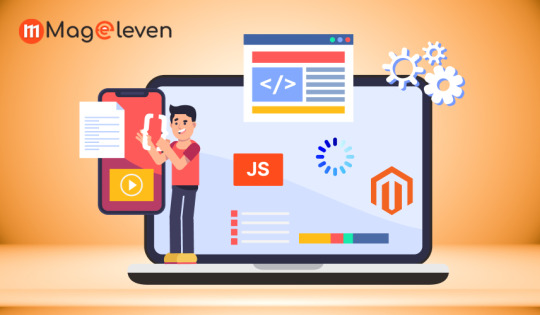
Benefits of Stopping JS for Certain User Agents
Improved Performance: This saves your site from unnecessary script execution for irrelevant or outdated user agents, and it loads faster with fewer resources.
Enhanced Compatibility: Avoid potential problems with unsupported browsers by stopping scripts that may not work, making it easier to use across platforms.
Better User Experience: Optimizing scripts for modern browsers pays off in performance and cleanliness for most users, aligning with their expectations.
By implementing this strategy, you can enhance the functionality and performance of your Magento 2 store as well as effectively serve most of your audience. It is a smart way to balance compatibility and performance on your eCommerce platform.
1 note
·
View note
Text
How to Add Custom Header and Top Link in Magento 2
Hello Everyone,
In this blog, we will learn about how to add Custom Header and Top Link in Magento 2.
Header link is displayed for both guest and logged in customer.
Top link is displayed for only logged in customers.
Without wasting your time, let us guide you straight away. Follow the easy step given below to Add Custom Header and Top Link in Magento 2.
STEPS FOR ADD CUSTOM HEADER AND TOP LINK IN MAGENTO 2
Step 1: Create default.xml file
app/code/Vendor/Extension/view/frontend/layout/default.xml
<?xml version=”1.0″?>
<page xmlns:xsi=”http://www.w3.org/2001/XMLSchema-instance” xsi:noNamespaceSchemaLocation=”urn:magento:framework:View/Layout/etc/page_configuration.xsd”>
<body>
<referenceBlock name=”header.links”>
<block class=”Magento\Framework\View\Element\Html\Link” name=”header-menu”>
<arguments>
<argument name=”label” xsi:type=”string” translate=”true”>Custom Header Menu</argument>
<argument name=”path” xsi:type=”string”>*/*/*</argument>
</arguments>
</block>
</referenceBlock>
<referenceBlock name=”top.links”>
<block class=”Magento\Framework\View\Element\Html\Link” name=”top-link”>
<arguments>
<argument name=”label” xsi:type=”string” translate=”true”>Custom Top Link</argument>
<argument name=”path” xsi:type=”string”>*/*/*</argument>
</arguments>
</block>
</referenceBlock>
</body>
</page>
Step 2: Finally run the below commands
$ php bin/magento cache:flush
Step 3: Output:
https://omwebsolution.info/wp-content/uploads/2024/09/image-1.png
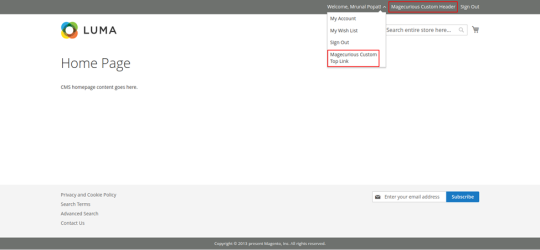
If you want to add custom block in your custom header or top link follow the below steps.
Step 1: Create default.xml file
app/code/Vendor/Extension/view/frontend/layout/default.xml
<?xml version=”1.0″?>
<page xmlns:xsi=”http://www.w3.org/2001/XMLSchema-instance” xsi:noNamespaceSchemaLocation=”urn:magento:framework:View/Layout/etc/page_configuration.xsd”>
<body>
<referenceBlock name=”header.links”>
<block class=”Vendor\Extension\Block\Customlink” name=”header-menu”>
<arguments>
<argument name=”label” xsi:type=”string” translate=”true”>Custom Header Menu</argument>
<argument name=”path” xsi:type=”string”>*/*/*</argument>
</arguments>
</block>
</referenceBlock>
</body>
</page>
Step 2: Create Customlink.php file
app/code/Vendor/Extension/Block/Customlink.php
<?php
namespace Vendor\Extension\Block;
class Customlink extends \Magento\Framework\View\Element\Html\Link
{
/**
* Render block HTML.
*
* @return string
*/
protected function _toHtml() {
if (false != $this->getTemplate()) {
return parent::_toHtml();
}
$label = $this->escapeHtml($this->getLabel());
return ‘<li><a ‘ . $this->getLinkAttributes() . ‘ >’ . $label . ‘</a></li>’;
}
}
Final Thoughts:
So this was the easiest way which we have told you in this blog. This is how you can Add Custom Header and Top Links in Magento 2. Hope you liked the blog.
So quickly go to the comment box and tell me how you like this blog?
Stay tuned with us on our site to get new updates of Magento.
Thanks for reading and visiting our site.
0 notes
Text
Getting Started with PHP: A Beginner's Guide to Your First "Hello World" Program

Introduction
PHP tutorial for beginners and professionals provides in-depth knowledge of PHP scripting language. Our PHP tutorial will help you to learn PHP scripting language easily.
This PHP tutorial covers all the topics of PHP such as introduction, control statements, functions, array, string, file handling, form handling, regular expression, date and time, object-oriented programming in PHP, math, PHP MySQL, PHP with Ajax, PHP with jQuery and PHP with XML.
What is PHP
PHP is an open-source, interpreted, and object-oriented scripting language that can be executed at the server side. PHP is well suited for web development. Therefore, it is used to develop web applications (an application that executes on the server and generates the dynamic page.).
PHP was created by Rasmus Lerdorf in 1994 but appeared in the market in 1995. PHP 7.0 is the latest version of PHP, which was released on 28 November. Some important points need to be noticed about PHP are as follows:
PHP stands for Hypertext Preprocessor.
PHP is an interpreted language, i.e., there is no need for compilation.
PHP can be embedded into HTML.
PHP is an object-oriented language.
PHP is an open-source scripting language.
PHP is simple and easy to learn language.

Why use PHP
PHP is a server-side scripting language, which is used to design dynamic web applications with MySQL database.
It handles dynamic content, database as well as session tracking for the website.
You can create sessions in PHP.
It can access cookies variables and also set cookies.
Using PHP language, you can control the user's to access some pages of your website.
It helps to encrypt the data and apply validation.
PHP supports several protocols such as HTTP, POP3, SNMP, LDAP, IMAP, and many more.
PHP Features

Install PHP
To install PHP, we will suggest you to install AMP (Apache, MySQL, PHP) software stack. It is available for all operating systems. There are many AMP options available in the market that are given below:
WAMP for Windows
LAMP for Linux
MAMP for Mac
SAMP for Solaris
FAMP for FreeBSD
XAMPP (Cross, Apache, MySQL, PHP, Perl) for Cross Platform: It includes some other components too such as FileZilla, OpenSSL, Webalizer, Mercury Mail, etc.
How to install XAMPP server on windows
We will learn how to install the XAMPP server on windows platform step by step. Follow the below steps and install the XAMPP server on your system.
Step 1: Click on the above link provided to download the XAMPP server according to your window requirement.
Step 2: After downloading XAMPP, double click on the downloaded file and allow XAMPP to make changes in your system. A window will pop-up, where you have to click on the Next button.
Step 3: Here, select the components, which you want to install and click Next.

Step 4: Choose a folder where you want to install the XAMPP in your system and click Next
Step 5: Click Next and move ahead
Step 6: XAMPP is ready to install, so click on the Next button and install the XAMPP.
Step 7: A finish window will display after successful installation. Click on the Finish button
Step 8: Choose your preferred language
Step 9: XAMPP is ready to use. Start the Apache server and MySQL and run the php program on the localhost.
Step 10: If no error is shown, then XAMPP is running successfully

How to run PHP code in XAMPP
Generally, a PHP file contains HTML tags and some PHP scripting code. It is very easy to create a simple PHP example. To do so, create a file and write HTML tags + PHP code and save this file with .php extension.
All PHP code goes between the php tag. It starts with <?php and ends with ?>. The syntax of PHP tag is given below:
<?php
//your code here
?>
How to run PHP programs in XAMPP PHP is a popular backend programming language. PHP programs can be written on any editor, such as - Notepad, Notepad++, Dreamweaver, etc. These programs save with .php extension, i.e., filename.php inside the htdocs folder.
For example - p1.php.
As I'm using window, and my XAMPP server is installed in D drive. So, the path for the htdocs directory will be "D:\xampp\htdocs".
Step 1: Create a simple PHP program like hello world.
<?php
echo "Hello World!";
?>
Step 2: Save the file with hello.php name in the htdocs folder, which resides inside the xampp folder.
Step 3: Run the XAMPP server and start the Apache and MySQL.
Step4: Now, open the web browser and type localhost http://localhost/hello.php on your browser window.
Step 5: The output for the above hello.php program will be shown as the screenshot below

Most of the time, PHP programs run as a web server module. However, PHP can also be run on CLI (Command Line Interface).
Credits – Shweta Patil (Backend)
MetricsViews Pvt. Ltd.
MetricsViews specializes in building a solid DevOps strategy with cloud-native including AWS, GCP, Azure, Salesforce, and many more. We excel in microservice adoption, CI/CD, Orchestration, and Provisioning of Infrastructure - with Smart DevOps tools like Terraform, and CloudFormation on the cloud.
www.metricsviews.com
0 notes
Text
SimpleXMLElement returns empty object resolved
SimpleXMLElement returns empty object resolved
Hello buddy, I hope you are doing well in this article we will learn about how we can convert XML to JSON, I know when you are trying to convert XML to JSON you get an empty object. But we have the solution, on how to convert XML to JSON via PHP. Look for the below XML response. <?xml version="1.0" encoding="UTF-8"?> <sEnvelope xmlns:a="http://www.w3.org/2005/08/addressing"…
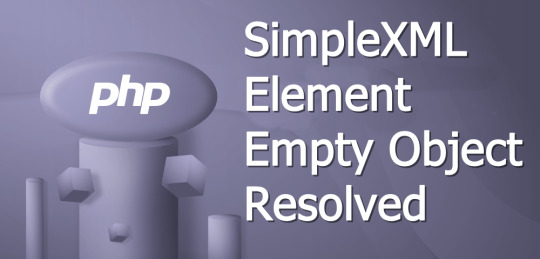
View On WordPress
#conversation of supplied dom node into a simple xml element object#conversation of supplied dom node into a simple xml elements object#conversion of supplied dom node into simple xml element object#conversion of supplied download into a simple xml element object#conversion of supplied node in to a simple xml element object#conversion of supplied node into a simple xml element object#php to xml converter#php xml to json with attributes#php xml to json without attributes#simplexmlelement object to json#simplexmlelement to xml#soap xml to json php#xml to array in php#xml to json laravel#xml to json php online#xml to string php
0 notes
Text
Catch

So over the last few weeks I've been working on Catch. With work and the festive period I haven't had a lot of time; I finally got the opportunity to finish it last night. :)
It has a medium rating but I wouldn't say it's due to the initial foothold and privilege escalation being difficult- it's more due to there being a couple of rabbit holes (all of which I fell into for a period!)

Enumeration
As always, a port scan kicks off the process. Unfortunately I can't show the output of the port scan as during the time I switched laptops and I'm too lazy to power my old one on. xD However, the results were roughly as follows:
Port 80: HTTP (Catch Global Systems main page)
Port 3000: Gitea(?)
Port 5000: Lets Chat(?)
Port 8000: Cachet status page system
Port 80 was the first location I checked. You're greeted with what appears to be Catch's main application:
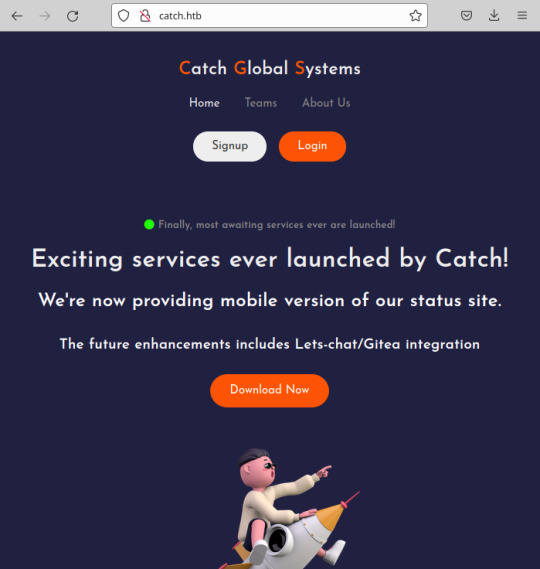
The signup/login functionality isn't present; I did notice the ability to download a file. The file that downloads is an apk.
For those that are unfamiliar with mobile applications, apk is one of the file formats for an Android mobile application which uses XML and Java. Having a little experience with mobile applications, my first thought was to decompile the apk and check for any hidden hardcoded secrets, usually stored in strings.xml.
To decompile the apk, I used apktool.
$ apktool d catchv1.0.apk
This decompiles the apk to near it's original form and places the resulting files in ./catchv1.0/. From here, I viewed ./res/values/strings.xml and found 3 potentially usable tokens for other applications:
$ grep token catchv1.0/res/values/strings.xml <string name="gitea_token">b87bfb6345ae72ed5ecdcee05bcb34c83806fbd0</string> <string name="lets_chat_token">NjFiODZhZWFkOTg0ZTI0NTEwMzZlYjE2OmQ1ODg0NjhmZjhiYWU0NDYzNzlhNTdmYTJiNGU2M2EyMzY4MjI0MzM2YjU5NDljNQ==</string> <string name="slack_token">xoxp-23984754863-2348975623103</string>
Foothold
With these in hand, I started with Lets Chat at random. Lets Chat is an open-source chat application utilizing a REST api. With it being open-source, it didn't take long at all to find how to use the discovered token:
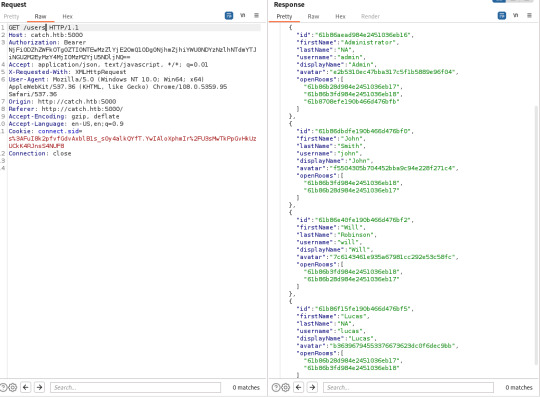

As you can see, a password for John is viewable in one of the chat rooms. This grants you access to another one of their applications called Cachet- open-source yet again.
Cachet is the last stop before system access; admittedly this is where I fell rabbit hole 1 as I did spend some time trying to use the gitea_token, more out of curiosity than anything. After spending some time on this, however, I gave up and focused on Cachet.
As it turns out, the version of Cachet in use had two pubicly known vulnerabilities related to interaction with the application's dotenv file. One allowed you to leak values set in dotenv while the other allowed you to add new values to dotenv which could be used to achieve remote command execution. This is done by hosting a redis server, altering the dotenv file to make the application use your hosted redis server as a session driver and finally changing the value of the session key after the initial connection to a payload generated by phpggc. Better detail off this is given here.
I did spend some time playing around with the RCE vulnerability here, more out of interest as I haven't had any experience with Redis prior to this and it took me a while to get RCE working as the video doesn't explicitly show the process step-by-step.
Originally, I was getting the token from the source code in the application, adding this as a key with the phpggc payload as the value and then altering the dotenv file to connect to my Redis Server. As the RCE occurs when the client connects the second time and reads the value from the original session token, this didn't work.
I did eventually get this working, uploaded a PHP web shell and upgraded this to a reverse shell; this ultimately proved to be a waste of time as you end up in a Docker instance with no ability to break out of it!

With a heavy heart, I turned to the second vulnerability and leaked the database password from the dotenv file. This grants us access to the server through SSH as WIll.
Privilege Escalation
Privilege escalation was actually quite easy! Some simple enumeration reveals the presence of world-writeable directory /opt/mdm/apk_bin. In /opt/mdm, there is a Bash file verify.sh.
verify.sh is used to verify the legitimacy of apks uploaded to apk_bin and is executed as part of a cronjob which is executed as root. While references to verify.sh cannot be directly found, there is reference to 'check.sh' in the root directory in running processes (netstat -ano.)
The interesting lines of the script are here:
app_check() { APP_NAME=$(grep -oPm1 "(?<=string name=\"app_name\">)[^<]+" "$1/res/values/strings.xml") echo $APP_NAME ...
The function app_check is taking the app_name from strings.xml and echoing it back with no form of mitigation against command injection. For example, wrapping the variable name with ${} would have prevented this vulnerability being exploitable as this would have specified that only variable expansion was expected- the app name would have been echoed back as a string and not interpreted as a literal Bash command.
I tested this first by simply making the app name 'Catch; touch /opt/mdm/heuheu' and uploading it using python -m SimpleHTTPServer on my end and curl on Catch's end which achieved the expected outcome.
I did this with APK Editor Studio after encountering some errors trying do manually decompile and then recompile with apktool. Note that you also need to create a key for signing the APK as verify.sh uses jarsigner to verify this.
will@catch:/opt/mdm/apk_bin$ ls -al .. total 16 drwxr-x--x+ 3 root root 4096 Jan 6 21:55 . drwxr-xr-x 4 root root 4096 Dec 16 2021 .. drwxrwx--x+ 2 root root 4096 Jan 6 22:03 apk_bin -rw-r--r-- 1 root root 0 Jan 6 21:55 heuheu -rwxr-x--x+ 1 root root 1894 Mar 3 2022 verify.sh
From here, I went old school and just made /etc/passwd fully accessible by everyone before changing root's password to 'mwaha'
Generating the password:
$ openssl passwd mwaha KW56XEY7wxZuU
Where the password is added in /etc/passwd:
root:KW56XEY7wxZuU:...
There you go. ^-^
#hackthebox#hacking#android apk#apktool#command injection#redis server#dotenv#cachet#lets chat#gitea#cronjob#web shell#reverse shell#ssh#docker#open source
20 notes
·
View notes
Text
Json and Laravel Eloquent with example
JSON is short form of JavaScript Object Notation, which is used to store data and since it is very lightweight hence majorly used for transporting data to and from a web server. In earlier days, XML was used for this very purpose but writing and reading XML data was very tedious while JSON on the other hand, is self describing.
In today’s topic I am going to show you how to store JSON data into MySQL and access those data using laravel eloquent query builders.
Storing JSON data in MySQL using Laravel
First let’s create a dummy table using migration command.
Schema::create(json_examples, function (Blueprint $table) { $table->bigIncrements('id'); $table->string('name'); $table->text('json_details'); //using text datatype to store json $table->timestamps(); });
As you can see I used text datatype for storing json.
Next, let’s create a corresponding Model for the same
php artisan make:model JsonExample
JsonExample.php
public static function create($data) { $new = new self(); $new->name = $data['name']; $new->json_details = $data['json_details'']; $new->save(); }
So in controller we can do something like this:
public function storeEmpData(Request $request) { ... $name = $request->name'; $details = ['emp_code' => '001', 'date_of_joining' => Carbon::parse($request->doj), 'salary' => '50000']; $dataToStore = [ 'name' => $name, 'Json_details' => json_encode($details) ]; //saving data JsonExample::create($dataToStore); }
Processing Json data in Laravel eloquent.
Json data in where()
We can easily apply conditions on json data in laravel using -> (arrow notation), for example, fetch records where salary is more than 50000.
JsonExample.php
public static function getSalaryMoreThan($salary) { return self::where('json_details->salary','>',$salary)->get(); }
Access json data using json_extract()
Another example, we need records of employees who joined the company before a date for instance 9th November 2018.
JsonExample.php
public static function getEmployeesBeforeDate($date) { return self::whereDate("json_extract('json_details', '$.doj')", '<', $date)->get() }
As you can see above, I used json_extract() method which is MySQL’s function to extract a field from JSON column since I can not simply instruct eloquent using arrow operator like
return self::whereDate('json_details->doj', '<', $date)->get()
Rather I have to explicitly tell eloquent to extract json field and then proceed.
JSON data in DB::raw()
Many times we need to use MySQL’s aggregate functions like SUM() as per the requirement, in that case we use DB facade. For example,
select(DB::raw('sum(...)'))
How to access json field in MySQL’s aggregate function ?
It is very simple, let’s take an example, we need to sum total salary of employees.
public static function findTotalSalary() { return self::select(DB:raw('sum("json_extract('json_details', '$.salary')") as total_salary'))->get(); }
Conclusion
That’s all about this topic friends, I hope you learned something new which you haven’t thought about. I thought I should share this knowledge as I encountered such problem while working on a project today where I do save additional data in json format. Do comment your reviews and experiences below.
Thank you :)
Ebooks available now
You can download this article’s PDF eBooks for offline reading from below:
Issuu
Slide Share
Edocr
AuthorStream
Scribd
#laravel#laravel framework#laravel projects#eloquent orm#development#web development#programming#PHP Developers#php#mysql#json#javascript#oop
4 notes
·
View notes
Text
Php training course
PHP Course Overview
PHP is a widely-used general-purpose scripting language that is especially suited for Web development and can be embedded into HTML.
PHP can generate the dynamic page content
PHP can create, open, read, write, and close files on the server
PHP can collect form data
PHP can send and receive cookies
PHP can add, delete, modify data in your database
PHP can restrict users to access some pages on your website
PHP can encrypt data
With PHP you are not limited to output HTML. You can output images, PDF files, and even Flash movies. You can also output any text, such as XHTML and XML.
PHP Training Course Prerequisite
HTML
CSS
Javascript
Objectives of the Course
PHP runs on different platforms (Windows, Linux, Unix, Mac OS X, etc.)
PHP is compatible with almost all servers used today (Apache, IIS, etc.)
PHP has support for a wide range of databases
PHP is free. Download it from the official PHP resource: www.php.net
PHP is easy to learn and runs efficiently on the server-side
PHP Training Course Duration
45 Working days, daily 1.30 hours
PHP Training Course Overview
An Introduction to PHP
History of PHP
Versions and Differences between them
Practicality
Power
Installation and configuring Apache and PHP
PHP Basics
Default Syntax
Styles of PHP Tags
Comments in PHP
Output functions in PHP
Datatypes in PHP
Configuration Settings
Error Types
Variables in PHP
Variable Declarations
Variable Scope
PHP’s Superglobal Variables
Variable Variables
Constants in PHP
Magic Constants
Standard Pre-defined Constants
Core Pre-defined Languages
User-defined Constants
Control Structures
Execution Control Statements
Conditional Statements
Looping Statements with Real-time Examples
Functions
Creating Functions
Passing Arguments by Value and Reference
Recursive Functions
Arrays
What is an Array?
How to create an Array
Traversing Arrays
Array Functions
Include Functions
Include, Include_once
Require, Require_once
Regular Expressions
Validating text boxes,emails,phone number,etc
Creating custom regular expressions
Object-Oriented Programming in PHP
Classes, Objects, Fields, Properties, _set(), Constants, Methods
Encapsulation
Inheritance and types
Polymorphism
Constructor and Destructor
Static Class Members, Instance of Keyword, Helper Functions
Object Cloning and Copy
Reflections
PHP with MySQL
What is MySQL
Integration with MySQL
MySQL functions
Gmail Data Grid options
SQL Injection
Uploading and downloading images in Database
Registration and Login forms with validations
Pegging, Sorting,…..
Strings and Regular Expressions
Declarations styles of String Variables
Heredoc style
String Functions
Regular Expression Syntax(POSIX)
PHP’s Regular Expression Functions(POSIX Extended)
Working with the Files and Operating System
File Functions
Open, Create and Delete files
Create Directories and Manipulate them
Information about Hard Disk
Directory Functions
Calculating File, Directory and Disk Sizes
Error and Exception Handling
Error Logging
Configuration Directives
PHP’s Exception Class
Throw New Exception
Custom Exceptions
Date and Time Functions
Authentication
HTTP Authentication
PHP Authentication
Authentication Methodologies
Cookies
Why Cookies
Types of Cookies
How to Create and Access Cookies
Sessions
Session Variables
Creating and Destroying a Session
Retrieving and Setting the Session ID
Encoding and Decoding Session Data
Auto-Login
Recently Viewed Document Index
Web Services
Why Web Services
RSS Syntax
SOAP
How to Access Web Services
XML Integration
What is XML
Create an XML file from PHP with Database records
Reading Information from XML File
MySQL Concepts
Introduction
Storage Engines
Functions
Operators
Constraints
DDL commands
DML Commands
DCL Command
TCL Commands
Views
Joins
Cursors
Indexing
Stored Procedures
Mysql with PHP Programming
Mysql with Sqlserver(Optional)
SPECIAL DELIVERY
Protocols
HTTP Headers and types
Sending Mails using PHP
Email with Attachment
File Uploading and Downloading using Headers
Implementing Chating Applications using PHP
and Ajax
SMS Gateways and sending SMS to Mobiles
Payments gateways and How to Integrate them
With Complete
MVC Architecture
DRUPAL
JOOMLA
Word Press
AJAX
CSS
JQUERY (Introduction and few plugins only)
1 note
·
View note
Link
PHP Regular Expressions with examples, php file, php session, php date, php array, php form, functions, time, xml, ajax, php mysql, regex, string, oop, addslashes(), addcslashes() etc.
1 note
·
View note
Text
Best way to prepare for PHP interview
PHP is one among the programming languages that are developed with built-in web development functions. The new language capabilities contained in PHP 7 ensure it is simpler for developers to extensively increase the performance of their web application without the use of additional resources. interview questions and answers topics for PHP They can move to the latest version of the commonly used server-side scripting language to make improvements to webpage loading without spending extra time and effort. But, the Web app developers still really should be able to read and reuse PHP code quickly to maintain and update web apps in the future.
Helpful tips to write PHP code clean, reliable and even reusable
Take advantage of Native Functions. When ever writing PHP code, programmers may easily achieve the same goal utilizing both native or custom functions. However, programmers should make use of the built-in PHP functions to perform a number of different tasks without writing extra code or custom functions. The native functions should also help developers to clean as well as read the application code. By reference to the PHP user manual, it is possible to collect information about the native functions and their use.
Compare similar functions. To keep the PHP code readable and clean, programmers can utilize native functions. However they should understand that the speed at which every PHP function is executed differs. Some PHP functions also consume additional resources. Developers must therefore compare similar PHP functions and select the one which does not negatively affect the performance of the web application and consume additional resources. As an example, the length of a string must be determined using isset) (instead of strlen). In addition to being faster than strlen (), isset () is also valid irrespective of the existence of variables.
Cache Most PHP Scripts. The PHP developers needs keep in mind that the script execution time varies from one web server to another. For example, Apache web server provide a HTML page much quicker compared with PHP scripts. Also, it needs to recompile the PHP script whenever the page is requested for. The developers can easily eliminate the script recompilation process by caching most scripts. They also get option to minimize the script compilation time significantly by using a variety of PHP caching tools. For instance, the programmers are able to use memcache to cache a lot of scripts efficiently, along with reducing database interactions.
common asked php interview questions and answers for freshers
Execute Conditional Code with Ternary Operators. It is actually a regular practice among PHP developers to execute conditional code with If/Else statements. But the programmers want to write extra code to execute conditional code through If/Else statements. They could easily avoid writing additional code by executing conditional code through ternary operator instead of If/Else statements. The ternary operator allows programmers to keep the code clean and clutter-free by writing conditional code in a single line.
Use JSON instead of XML. When working with web services, the PHP programmers have option to utilize both XML and JSON. But they are able to take advantage of the native PHP functions like json_encode( ) and json_decode( ) to work with web services in a faster and more efficient way. They still have option to work with XML form of data. The developers are able to parse the XML data more efficiently using regular expression rather than DOM manipulation.
Replace Double Quotes with Single Quotes. When writing PHP code, developers are able to use either single quotes (') or double quotes ("). But the programmers can easily improve the functionality of the PHP application by using single quotes instead of double quotes. The singular code will speed up the execution speed of loops drastically. Similarly, the single quote will further enable programmers to print longer lines of information more effectively. However, the developers will have to make changes to the PHP code while using single quotes instead of double quotes.
Avoid Using Wildcards in SQL Queries. PHP developers typically use wildcards or * to keep the SQL queries lightweight and simple. However the use of wildcards will impact on the performance of the web application directly if the database has a higher number of columns. The developers must mention the needed columns in particular in the SQL query to maintain data secure and reduce resource consumption.
However, it is important for web developers to decide on the right PHP framework and development tool. Presently, each programmer has the option to decide on a wide range of open source PHP frameworks including Laravel, Symfony, CakePHP, Yii, CodeIgniter, and Zend. Therefore, it becomes necessary for developers to opt for a PHP that complements all the needs of a project. interview questions on PHP They also need to combine multiple PHP development tool to decrease the development time significantly and make the web app maintainable.
php interview questions for freshers
youtube
1 note
·
View note
Text
Best Institutes for PHP Training in Chandigarh
May 18, 2023
PHP Training in Chandigarh
PHP training is an invaluable resource for individuals seeking to master one of the most popular programming languages used for web development. PHP, which stands for Hypertext Preprocessor, empowers developers to create dynamic and interactive websites. Through PHP training in Chandigarh, aspiring developers gain a comprehensive understanding of PHP syntax, functions, and frameworks, enabling them to build robust and scalable web applications. They learn how to integrate PHP with databases, handle form data, implement security measures, and utilize advanced features to enhance the user experience. With hands-on exercises and real-world projects, PHP training equips individuals with the skills and knowledge necessary to create dynamic web solutions and embark on a successful career in web development.
PHP Training
WHAT IS PHP COURSE IN CHANDIGARH?
A PHP course is a structured educational program designed to teach individuals about the PHP scripting language and its applications in web development. The course typically covers a wide range of topics, including the basics of PHP syntax, variables, data types, control structures, functions, arrays, and file handling. Participants learn how to integrate PHP with databases, such as MySQL, and use it to perform common database operations. Additionally, the course may introduce popular PHP frameworks like Laravel or CodeIgniter, which facilitate the development of complex web applications. Students are often guided through hands-on exercises and projects to reinforce their understanding and gain practical experience. By completing a PHP course, individual s acquire the skills necessary to create dynamic and interactive websites and web applications using PHP as their programming language of choice. php-training-in-chandigarh
SYLLABUS OF PHP COURSE IN CHANDIGARH?
Introduction to PHP
Basics of PHP
1. PHP syntax and variables
Data types and operators
Control Structures and Functions
2. Conditional statements (if, else, switch)
Loops (for, while, do-while)
Functions and function libraries
Arrays and Strings
3. Working with arrays
Array functions
Manipulating strings
String functions PHP Forms and Data Handling
4. HTML forms and PHP form handling
Form validation and data sanitization File uploading and handling Working with Databases
5. Introduction to databases
MySQL database connectivity SQL queries and data manipulation CRUD operations (Create, Read, Update, Delete) Object-Oriented Programming (OOP) in PHP
6. OOP concepts and principles
Classes, objects, and inheritance Encapsulation, polymorphism, and abstraction OOP best practices in PHP Error Handling and Debugging
7. Common errors and debugging techniques
Error handling mechanisms in PHP Exception handling Session Management and Cookies
8. Managing user sessions
Working with cookies Session security considerations PHP Frameworks
9. Introduction to popular PHP frameworks (e.g., Laravel, CodeIgniter)
MVC (Model-View-Controller) architecture Building web applications using a PHP framework Web Services and APIs
10. Consuming web services and APIs
RESTful API development in PHP JSON and XML data handling Security and Best Practices
11. PHP security vulnerabilities and mitigation
Data validation and input sanitization Password hashing and encryption Secure coding practices Deployment and Project Development.
BENEFITS OF DOING PHP TRAINING IN CHANDIGARH
Training from the team of professional PHP developers with years of experience. Training on core Live Projects to get practical exposure of programming. Training on various CMS and framework as per your requirement. Small batches with early morning or late evening and weekend batch availability. Get free personal domain and hosting as we have our own dedicated Web servers. Get more than 2000 solved PHP interview question answers.
TRAININGS RELATED TO PHP TRAINING IN CHANDIGARH
WEB DESIGNING COURSE IN CHANDIGARH web designing course in chadigarh
DIGITAL MARKETING COURSE IN CHANDIGARHdigital marketing course in chandigarh
GRAPHIC DESIGNING COURSE IN CHANDIGARH and many more.graphic designing course in chandigarh
RELEVANT INSTITUTES FOR DOING PHP TRAINING IN CHANDIGARH
1. EXCELLENCE TECHNOLOGY
Excellence technology in Chandigarh is a best institute which provides digital marketing course, web designing course, graphic designing course , full stack course and programming language course and many more. They work on PHP , java , web designing, python etc.excellence-technology
2. EXTECH DIGITAL.
Extech Digital is best for php training in Chandigarh which gives you the facility of doing PHP training in Chandigarh , programming languages, web designing courses , coding languages, digital marketing courses etc . Extech
3. EXCELLENCE ACADEMY.
Excellence academy is a best institute for php training in Chandigarh which also gives all the facility that a php trainer wants. It also provides these courses in Hamirpur and Kangra also.excellence-academy
ABOUT AUTHOR.
Disha is a PHP Expert who is formerly working with Excellence technology for nearly five years. She is well experienced in programming languages.
you can follow her on:instagramfacebook
Comments
Powered by Blogger
Theme images by Michael Elkan
0 notes
Text
Remove HTML Tags From String Tutorial in CodeIgniter 4
Inside this article we will see the concept i.e Remove HTML Tags From String Tutorial in CodeIgniter 4 Tutorial Example. Article contains the classified information about How to remove HTML tags from data in CodeIgniter.
We will use a PHP Function for this i.e PHP strip_tags() Function. The strip_tags() function strips a string from HTML, XML, and PHP tags.
Article contains the very basic steps for HTML filter from tags using PHP functions.
0 notes
Text
Tumblr's 4th Annual Security Capture the Flag
We've hosted an internal Security Capture the Flag (CTF) event for four years in a row now, with each year getting better than the last!
The event
Previously, we were only open to Tumblr employees. This year we decided to extend an invite out to the other teams housed under our parent company, Oath.
All participants had a three hour window to hack, a buffet of tacos, beer, and wine to dive into, and a stack of prizes for the top four players (see Prizes below for details)!
Challenges were available Jeopardy-style, broken down by category. We had eight fun categories to select from:
Auth Bypass (authn | authz)
Cross Site Request Forgery (CSRF)
Cross Site Scripting (XSS)
Crypto
Forensics
Reverse Engineering
SQL Injection (SQLi)
XML Injection (+ XXE)
We also sprinkled a few "inside joke" Easter eggs around the system that awarded bonus points to anyone that discovered them! For example, if they attempted to find a hole in the CTF system itself and navigated to /wp-admin, we'd give them a flag on a prank WordPress page; or perhaps testing to find XSS with a <marquee> tag — only the greatest of all XSS tags!
While the Security Team walked around and helped out, we also setup a mini lockpick village just because.
Solving challenges & scoring points
To complete a challenge, the player had to achieve the goal within one of the listed categories.
In XSS challenges, the player would need to cause the browser to create an alert dialog (e.g. alert()).
Conversely, in SQL Injection challenges the player would need to read the flag column from the flags table in that challenge's database.
When the player successfully solved the challenge they were awarded with a flag, each in the format ofTumblr{s0mE_cHalL3nGe_j0kE-abcdef012}. That last piece is a unique hash for the user, per challenge, so that they couldn't directly share their flag. They can help others — even provide the solution — but they can't simply give away their flag.
Each challenge, when solved, is worth a certain number of points based on the challenge's difficulty and whether or not the player used the challenge's hints.
There were 3800 points available, though no player was able to break 1000!
At the end, we locked the leaderboard and announced the winners.
Prizes
We awarded the top four players based on their ranking on the leaderboard. First place got first dibs from the list. Second place gets to select theirs from the remaining lot, and so on.
Up for grabs this year:
Hak5 Elite Field Kit
Proxmark3 RDV2 Kit
Samsung Chromebook Plus
Lockpick set and a "how to" manual
Challenge snapshot
Throughout the eight categories we had a total of 46 challenges. We wanted to have a wide range of challenges that welcomed players of all backgrounds and experience levels.
The goal for XSS challenges was to get an alert dialog to appear. The player is presented with a vulnerable web page and they needed to determine where the vulnerability is and how to exploit it. Example:
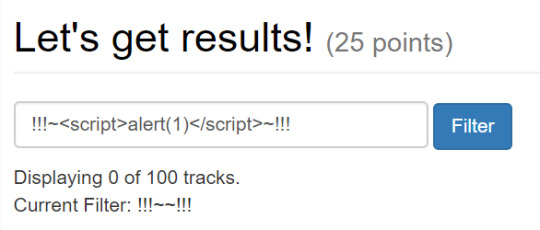
These challenge levels ranged everywhere between simple non-sanitized output to DOM reflection to CSP bypasses.
One fo the more unique challenges to develop was SQL Injection. These offered players the ability to put their SQL skills to the test with a variety of basic input injection, blind injection, and filter bypassing challenges.
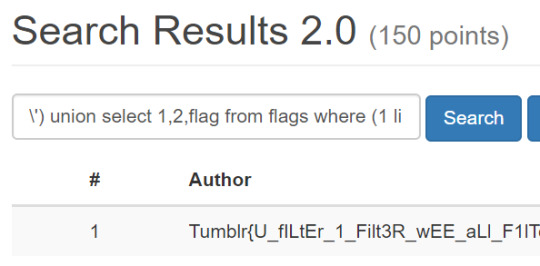
In at least one of the SQLi challenges, players had to inject into an INSERT statement. When creating challenges like this, special care had to be taken to give players the full capabilities of MySQL but also prevent them from revealing the flag to other players — it's a tricky thing making vulnerabilities secure!
The infrastructure
A frequent question I receive when I talk about deving on the CTF is "are you using CTFd?" Short answer? Nope! A slightly less short answer is that CTFd wasn't out when we started this =P.
The framework we're using is called "Security Training Grounds" and it's a custom-written project using PHP, PhantomJS, and MySQL (with HTML + JavaScript too, of course), running in Amazon Web Services.
An advantage of writing this in-house was that it gave us the ability to create a dynamic and robust system that has endless capabilities.
PHP + MySQL
The website was created from scratch, written in PHP with a little bit of jQuery + Bootstrap on the frontend and MySQL as the database.
The big thing here are the challenges themselves. Each challenge is hosted on its own subdomain. This enables us to provide live and interactive challenges like XSS or SQLi while still providing support static challenge types like Crypto or Reverse Engineering.
We accomplished this by allowing dynamic hostnames on the webserver and defining a subdomain hostname for each challenge that's stored in MySQL. When a web request comes in, the app checks whether it's a subdomain or not. If so, it hits the database to determine what to display.
For most challenges, we were able to handle all of the dynamic pieces directly in PHP. For some, such as the C or Java reverse engineering challenges, we did need to shell out to gcc or javac to build the custom binaries for each user.
PhantomJS
A difficulty for XSS and CSRF challenges is determining whether or not the participant successfully exploited the system. Surely we don't want to manually confirm for each flag, and attempting to pattern-match on their input would be crazy.
Our solution: execute what the player submits!
This is my own little baby, a piece of the system I'm so excited by. See, what better way to test XSS than to actually test XSS. As mentioned in the "Challenge snapshot" section above, when a player is working on a XSS challenge, they are given a website that has a XSS vulnerability. Their goal is to make an alert dialog appear. This is key and the requirement of the XSS framework itself.
On the client, we use this fancy little snippet:
var ctf_alert = alert; alert = function(msg) { ctf_phantomjs_alert_test(document.location, msg); };
This overrides the window's actual alert() function and lets us put some processing logic in the middle. The logic is to take a snapshot of the current page - the URL, query string, POST parameters, the cookies and then pass the full snapshot to a backend PhantomJS service (via a PHP proxy, to help prevent tampering).
The PhantomJS service replicates that entire request and loads the target web page. If the page invokes an alert() call, which we catch via PhantomJS's onAlert, then we return with a "success" and the PHP proxy will return the user's flag. Our alert() overriding logic will then replace whatever message the user attempted to display and display their flag instead. Fancy af.
CSRF has a similar setup, except the player needs to submit their full CSRF payload:
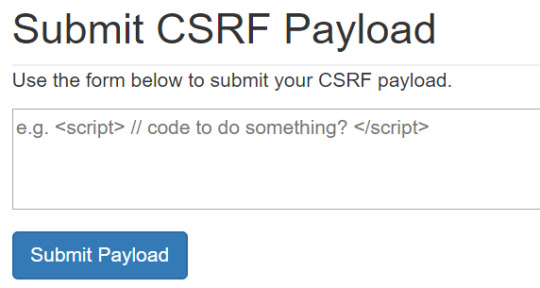
After submitting the payload to the PHP proxy, we pass the payload to PhantomJS. This executes the payload in the context of an empty web page. If the PhantomJS worker successfully falls victim to the targeted action, the PHP proxy will return a flag to the user!
Open source
The framework code, as-is, is still relatively hacky and written with internal dependencies. We do believe in OSS though! We expect a near-future initiative to rewrite portions of it so we can release it for others to use for their CTF events, too.
Wanna Play?
Quick, come apply so you can participate in the next one: https://www.tumblr.com/jobs
#tumblr#tumblrhq#security#capture the flag#ctf#xss#csrf#sqli#hacking#tumblr event#tumblr staff#computer security#cybersecurity#cyber#programming#computers#tacos
115 notes
·
View notes
Text
PHP is one amongst the programming languages that were developed with inbuilt net development capabilities. The new language options enclosed in PHP seven any makes it easier for programmers to boost the speed of their net application considerably while not deploying extra resources. They programmers will switch to the foremost recent version of the wide used server-side scripting language to enhance the load speed of internet sites while not swing beyond regular time and energy. however the net application developers still want target the readability and reusability of the PHP code to take care of and update the net applications quickly in future.
12 Tips to write down Clean, rectifiable, and Reusable PHP Code
1) benefit of Native Functions While writing PHP code, the programmers have choice to accomplish identical objective by victimisation either native functions or custom functions. however the developers should benefit of the inbuilt functions provided by PHP to accomplish a spread of tasks while not writing extra code or custom functions. The native functions can any facilitate the developers to stay the appliance code clean and decipherable. they'll simply gather info concerning the native functions and their usage by touching on the PHP user manual.
Another way to check phpstorm key shortcuts
2) Compare Similar Functions The developers will use native functions to stay the PHP code decipherable and clean. however they need to keep in mind that the speed of individual PHP functions differs. Also, bound PHP functions consume extra resources than others. Hence, the developers should compare similar PHP functions, and select the one that doesn't have an effect on the performance of the net application negatively and consume extra resources. as an example, they need to verify the length of a string by victimisation isset() rather than strlen(). additionally to being quicker than strlen(), isset() conjointly remains valid in spite of the existence of variables.
3) Cache Most PHP Scripts The PHP programmers should keep in mind that the script execution time differs from one net server to a different. as an example, Apache net server serve a HTML page abundant quicker than PHP scripts. Also, it has to recompile the PHP script on every occasion the page is requested for. The programmers will simply eliminate the script recompilation method by caching most scripts. They even have choice to scale back the script compilation time considerably by employing a style of PHP caching tools. as an example, the programmers will use memcache to cache an oversized variety of scripts expeditiously, at the side of reducing info interactions.
4) Execute Conditional Code with Ternary Operators It is a typical observe among PHP developers to execute conditional code with If/Else statements. however the developers got to writing extra code to execute conditional code through If/Else statements. they'll simply avoid writing extra code by corporal punishment conditional code through ternary operator rather than If/Else statements. The ternary operator helps programmers to stay the code clean and clutter-free by writing conditional code during a single line.
5) Keep the Code decipherable and rectifiable Often programmers notice it intimidating perceive and modify the code written by others. Hence, they have beyond regular time to take care of and update the PHP applications expeditiously. whereas writing PHP code, the programmers will simply build the appliance simple to take care of and update by describing the usage and significance of individual code snippets clearly. they'll simply build the code decipherable by adding comments to every code piece. The comments can build it easier for alternative developers to form changes to the present code in future while not swing beyond regular time and energy.
6) Use JSON rather than XML While operating with net services, the PHP programmers have choice to use each XML and JSON. however they'll continuously benefit of the native PHP functions like json_encode( ) and json_decode( ) to figure with net services during a quicker and a lot of economical manner. They still have choice to work with XML style of information. The programmers will break down the XML information a lot of expeditiously by victimisation regular expression rather than DOM manipulation.
7) Pass References rather than worth to Functions The intimate PHP programmers ne'er declare new categories and strategies only if they become essential. They conjointly explore ways in which to recycle the categories and strategies throughout the code. However, they conjointly perceive the actual fact that a perform may be manipulated quickly by passing references rather than values. they'll any avoid adding additional overheads by passing references to the perform rather than values. However, they still got to make sure that the logic remains unaffected whereas passing relevancy the functions.
8) flip Error coverage on in Development Mode The developers should establish and repair all errors or flaws within the PHP code throughout the event method. They even have to place overtime and energy to mend the writing errors and problems known throughout testing method. The programmers merely set the error coverage to E_ALL to spot each minor and major errors within the PHP code throughout the event method. However, they need to flip the error coverage choice off once the appliance moves from development mode to production mode.
9) Replace inverted comma with Single Quotes While writing PHP code, programmers have choice to use either single quotes (') or inverted comma ("). however the developers will simply enhance the performance of the PHP application by victimisation single quotes rather than inverted comma. the only code can increase the speed of loops drastically. Likewise, the only quote can any change programmers to print longer lines of data a lot of expeditiously. However, the developers got to build changes to the PHP code whereas victimisation single quotes rather than inverted comma.
10) Avoid victimisation Wildcards in SQL Queries PHP programmers typically use wildcards or * to stay the SQL queries compact and easy. however the employment of wildcards might have an effect on the performance of the net application directly if the info includes a higher variety of columns. The programmers should mention the desired columns specifically within the SQL question to stay information secure and scale back resource consumption.
11) Avoid corporal punishment info Queries in Loop The PHP programmers will simply enhance the net application's performance by not corporal punishment info queries in loop. They even have variety of choices to accomplish identical results while not corporal punishment info queries in loop. as an example, the developers will use a strong WordPress plug-in like question Monitor to look at the info queries at the side of the rows laid low with them. they'll even use the debugging plug-in to spot the slow, duplicate, and incorrect info queries.
12) ne'er Trust User Input The sensible PHP programmers keep the net application secure by ne'er trusting the input submitted by users. They continuously check, filter and sanitize all user info to guard the appliance from varied security threats. they'll any forestall users from submitting inappropriate or invalid information by victimisation inbuilt functions like filter_var(). The perform can check for applicable values whereas receiving or process user input.
However, it's conjointly necessary for the net developers to select the correct PHP framework and development tool. At present, every technologist has choice to choose between a large vary of open supply PHP frameworks as well as Laravel, Symfony, CakePHP, Yii, CodeIgniter and Iranian language. Hence, it becomes essential for programmers to select a PHP that enhances all wants of a project. They conjointly got to mix multiple PHP development tool to scale back the event time considerably and build the net application rectifiable.
1 note
·
View note
Text
What is CodeIgniter? How Does PHP CI Framework Works? - Arya College
What do you know about CodeIgniter
What is CodeIgniter
Private Collages of Engineering in Jaipur Rajasthan have many courses like CodeIgniter it is an Application Development Framework - a toolkit - for people who build websites using PHP.
CodeIgniter is open source.
Was built by EllisLab.
Also it is a PHP framework, easy to learn,and suitable for beginners
It needs no extra configuration also you do not need to use the command line.
It is extremely light.
It is suitable for small or big projects a;sp all in all, you just need to know some PHP to develop the applications you want.
Each Controller triggers by a certain URI.
CodeIgniter Feature
Runs on PHP 4
Light Weight
Fast
Uses M-V-C
Clean URLs
Packs a Punch
Extensible
Friendly Community of Users
Thoroughly Documented
Best Engineering Collages of Jaipur Rajasthan says Frameworks are abstract, reusable platforms where we can develop our applications, alsoThey help in writing reusable and better-constructed code and their main characteristic is the MVC (Model – View – Control) architecture pattern.
MVC architecture representation of data from the logic of the application.
The Model work is to accessing the database or executing other operations.
The View work is to what the visitors of the web application see.
The Controller is work is to handling the incoming requests, validating input and showing the right view.
Advantages of CodeIgniter
Helpers and libraries
Support PHP 4 or PHP
Exceptional performance weight
Very fast
Clear document
Disadvantages of C,odeIgnite
ORM is not available
Modules
Auth Module
Ajax
Flow of CodeIgniter
User enters the URI of the project then CI gets the request and checks the routes file to find any matches, and If a match is found so it triggers the right Controller and function also the Controller calls the right Model to retrieve / create the data needed,, After the data is retrieved the Controller finds the right View and returns it and View and data is represented to the user
Controller is Triggered
It should be shown to the visitor and then it returns that View with the corresponding data.
This is defined by routes also Routes is a PHP configuration file that maps each URL of our web project to a Controller and a certain function.
Code of CI
Libraries :-
Benchmarking Class
Calendar Class
Cart Class
Config Class
Database Class
Email Class
Encryption Class
File Uploading Class
Form Validation Class
FTP Class
HTML Table Class
Image Manipulation Class, Input and Security Class
Loader Class
Language Class
Output Class
Pagination Class
Session Class
Trackback Class
Template Parser Class
Typography Class
Unit Testing Class
URI Class
User Agent Class
XML-RPC Class
Zip Encoding Class
Helpers
Inflector Helper
Language Helper
Number Helper
Path Helper
Security Helper
Smiley Helper
String Helper
Text Helper
Typography Helper
URL Helper
XML Help
Overview CI framework
CodeIgniter URLs
URI Routing
Controllers
Models
Views
Auto-loading Resources
Security
Auto-loading Resources and libraries, helpers, and plugins to be initialized automatically every time the system runs.
Managing your Applications:- to have multiple sets of applications that share a single CodeIgniter installation, FrontEnd and BackEnd
Security
URI Security
GET, POST, and COOKIE Data
XSS Filtering
Validate the data
Escape all data before database insertion
Directory structure of CI
+System
+Application
-Codeigniter
-Helper
-Libraries
-Database
-Language
Conclusion
Top Collages of Engineering in Jaipur Rajasthan says CodeIgniter supports helpers, which is essentially a collection of functions in a category, for example the helper for working with files (read / write) is “file” and libraries as form validation also all of these can come in handy and help a lot in developing your projects and It supports both traditional structures as Active Records patterns, also someone could set up CodeIgniter to run with Doctrine (ORM), a topic that will be presented in another tutorial.
0 notes
Text
Do you know about CodeIgniter
What do you know about CodeIgniter
What is CodeIgniter
Private Collages of Engineering in Jaipur Rajasthan have many courses like CodeIgniter it is an Application Development Framework - a toolkit - for people who build websites using PHP.
CodeIgniter is open source.
Was built by EllisLab.
Also it is a PHP framework, easy to learn,and suitable for beginners
It needs no extra configuration also you do not need to use the command line.
It is extremely light.
It is suitable for small or big projects a;sp all in all, you just need to know some PHP to develop the applications you want.
Each Controller triggers by a certain URI.
CodeIgniter Feature
Runs on PHP 4
Light Weight
Fast
Uses M-V-C
Clean URLs
Packs a Punch
Extensible
Friendly Community of Users
Thoroughly Documented
Best Engineering Collages of Jaipur Rajasthan says Frameworks are abstract, reusable platforms where we can develop our applications, alsoThey help in writing reusable and better-constructed code and their main characteristic is the MVC (Model – View – Control) architecture pattern.
MVC architecture representation of data from the logic of the application.
The Model work is to accessing the database or executing other operations.
The View work is to what the visitors of the web application see.
The Controller is work is to handling the incoming requests, validating input and showing the right view.
Advantages of CodeIgniter
Helpers and libraries
Support PHP 4 or PHP
Exceptional performance weight
Very fast
Clear document
Disadvantages of C,odeIgnite
ORM is not available
Modules
Auth Module
Ajax
Flow of CodeIgniter
User enters the URI of the project then CI gets the request and checks the routes file to find any matches, and If a match is found so it triggers the right Controller and function also the Controller calls the right Model to retrieve / create the data needed,, After the data is retrieved the Controller finds the right View and returns it and View and data is represented to the user
Controller is Triggered
It should be shown to the visitor and then it returns that View with the corresponding data.
This is defined by routes also Routes is a PHP configuration file that maps each URL of our web project to a Controller and a certain function.
Code of CI
Libraries :-
Benchmarking Class
Calendar Class
Cart Class
Config Class
Database Class
Email Class
Encryption Class
File Uploading Class
Form Validation Class
FTP Class
HTML Table Class
Image Manipulation Class, Input and Security Class
Loader Class
Language Class
Output Class
Pagination Class
Session Class
Trackback Class
Template Parser Class
Typography Class
Unit Testing Class
URI Class
User Agent Class
XML-RPC Class
Zip Encoding Class
Helpers
Inflector Helper
Language Helper
Number Helper
Path Helper
Security Helper
Smiley Helper
String Helper
Text Helper
Typography Helper
URL Helper
XML Help
Overview CI framework
CodeIgniter URLs
URI Routing
Controllers
Models
Views
Auto-loading Resources
Security
Auto-loading Resources and libraries, helpers, and plugins to be initialized automatically every time the system runs.
Managing your Applications:- to have multiple sets of applications that share a single CodeIgniter installation, FrontEnd and BackEnd
Security
URI Security
GET, POST, and COOKIE Data
XSS Filtering
Validate the data
Escape all data before database insertion
Directory structure of CI
+System
+Application
-Codeigniter
-Helper
-Libraries
-Database
-Language
Conclusion
Top Collages of Engineering in Jaipur Rajasthan says CodeIgniter supports helpers, which is essentially a collection of functions in a category, for example the helper for working with files (read / write) is “file” and libraries as form validation also all of these can come in handy and help a lot in developing your projects and It supports both traditional structures as Active Records patterns, also someone could set up CodeIgniter to run with Doctrine (ORM), a topic that will be presented in another tutorial.
0 notes